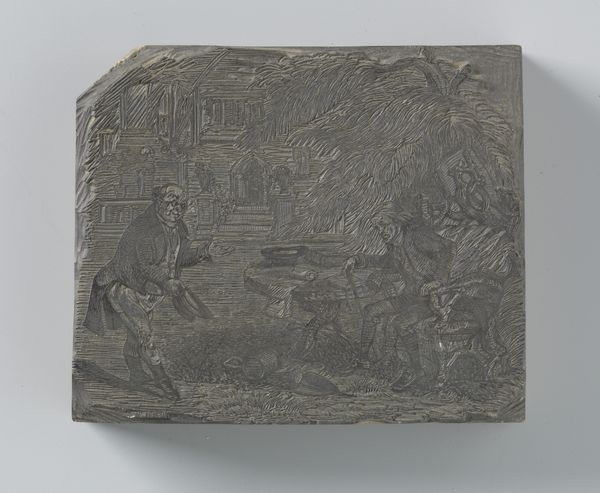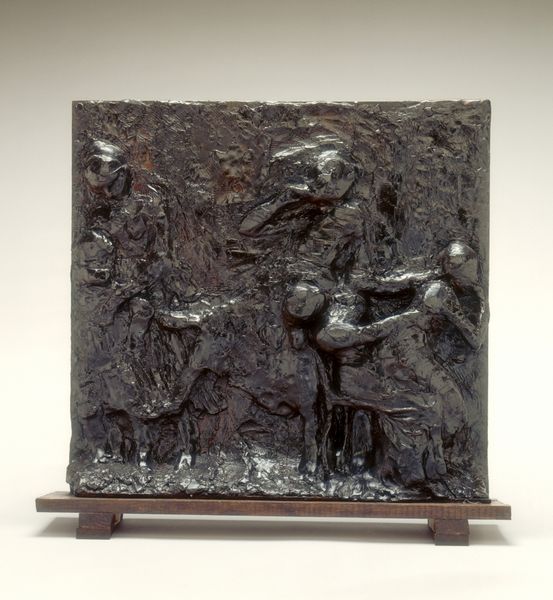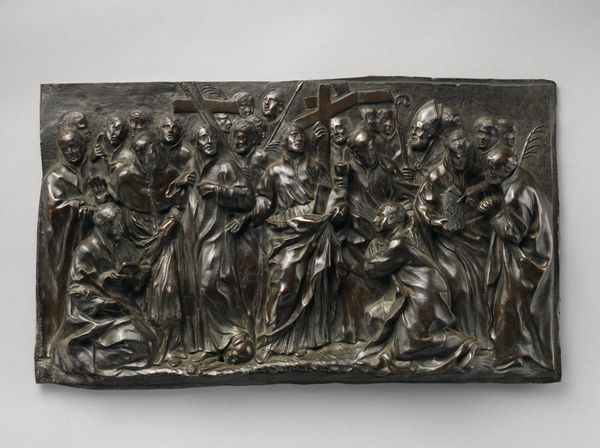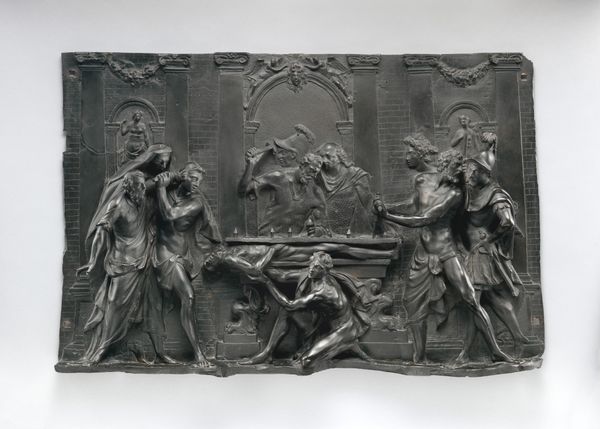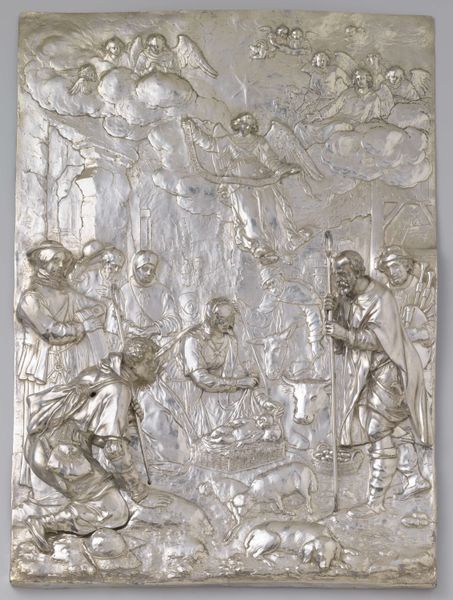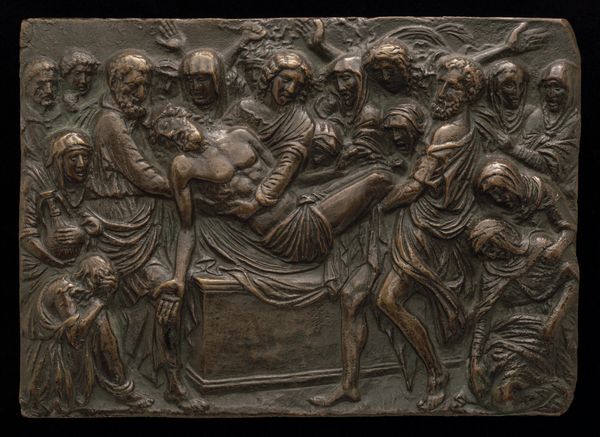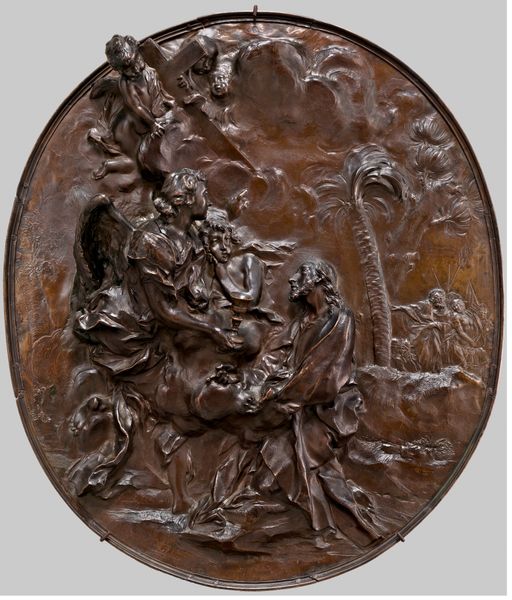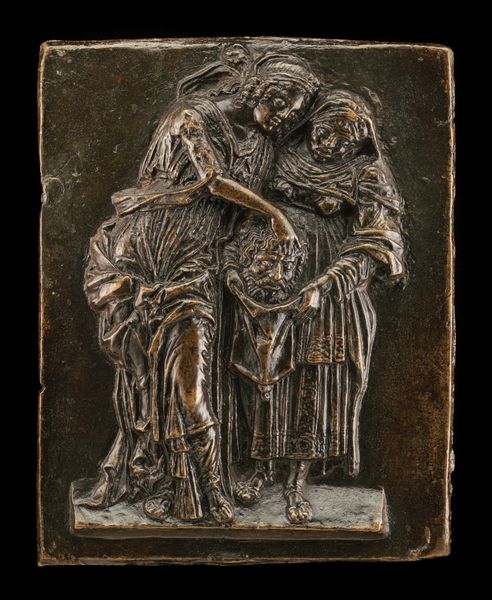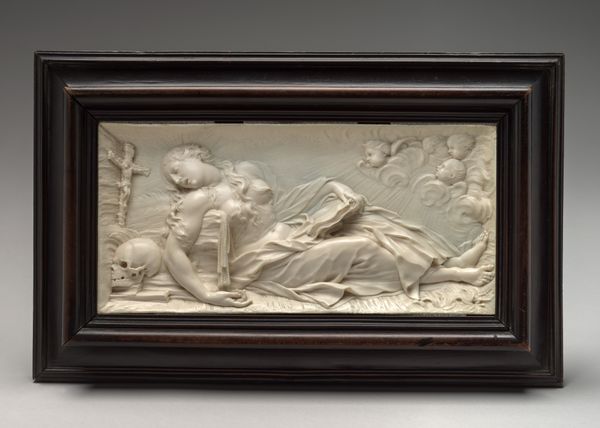
relief, bronze, sculpture
#
allegory
#
relief
#
bronze
#
11_renaissance
#
sculpture
#
decorative-art
#
virgin-mary
#
angel
Dimensions: confirmed: 4 5/16 × 6 1/4 × 7/8 in., 2.3 lb. (11 × 15.9 × 2.2 cm, 1029.5g)
Copyright: Public Domain
Curator: We’re standing before "Annunciation," a bronze relief sculpture created by Niccolò Roccatagliata between 1600 and 1615. It’s currently held in the collection of the Metropolitan Museum of Art. Editor: It's fascinating, almost a tableau vivant frozen in time. The density of detail is captivating—it feels very alive, like a secret theatre caught mid-performance. Curator: Indeed. The "Annunciation" depicts the moment the angel Gabriel informs Mary that she will conceive and bear the son of God. Notice the rich symbolism. The open book before Mary represents scripture and the fulfillment of prophecy, while the lilies symbolize her purity. Editor: The lilies are charmingly compact, a sweet bouquet plopped on a book as big as a table. I find myself pondering Mary’s expression. She’s listening, attentive but also reserved. It's a delicate balance. Roccatagliata manages to convey both the sacredness of the moment and Mary’s very human response, which reads to me as hesitation. Curator: That hesitation is key, I think. Roccatagliata captures a pivotal point – not just divine pronouncement but human choice. The Renaissance artists often portrayed Mary's free will in accepting her role in salvation. Also, look closely at Gabriel. His stance and gesturing hand emphasize his role as messenger and divine intercessor. The scene seems intentionally compressed into the shallow space of the relief, amplifying the psychological intensity of the encounter. Editor: The artist really embraces allegory; he transforms emotions into objects, gestures, and composition. You know, thinking of all the annunciations, it is kind of a peculiar scene isn't it? A winged interdimensional being walks into a modest girls' place, in an out of way locale and boom, changes everything! So yeah, that bit of Mary’s apprehension makes sense. I appreciate it more. Curator: And it’s that balance, that visual and emotional layering, that makes this relief so compelling and a reflection of the ongoing fascination of Renaissance artists with humanity, religion, and classical themes all coming together. Editor: It has really transported me to that very moment. It’s amazing how art can do that – collapsing time and space.
Comments
No comments
Be the first to comment and join the conversation on the ultimate creative platform.
